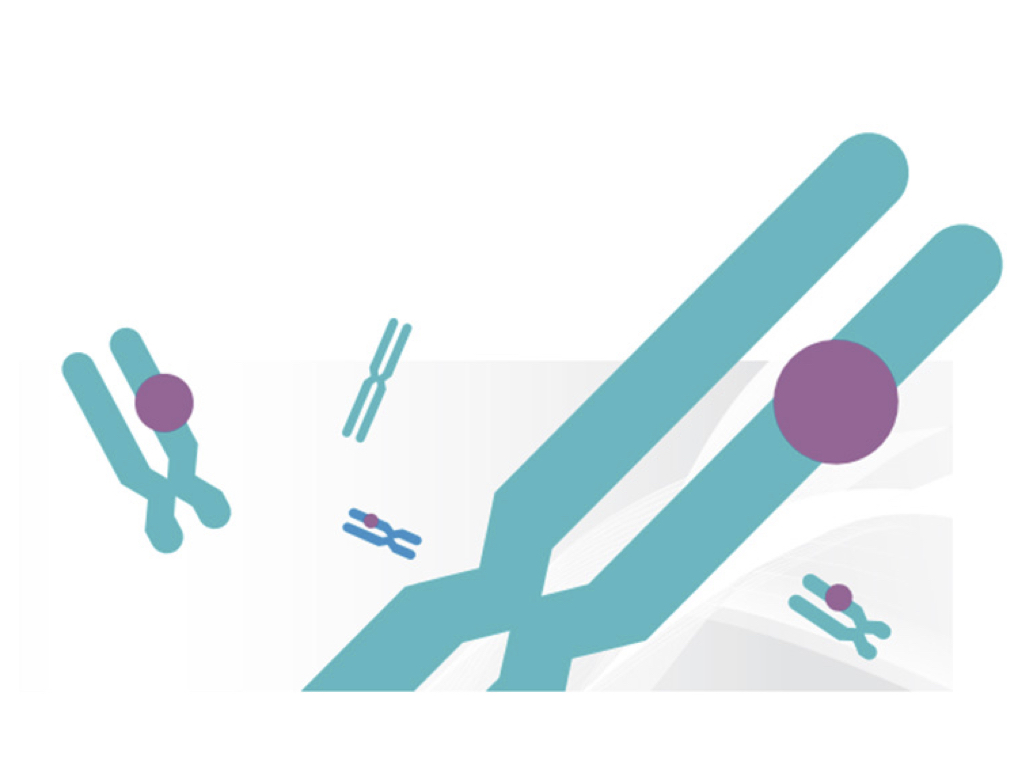A karyotype is prepared in order to study the abnormalities associated with it that are commonly known as chromosomal abnormalities or karyotyping abnormalities.
Usually, karyotyping abnormalities are either structural or numerical, notably, here single base change or other smaller alteration related DNA can’t be encountered using the karyotyping.
However, as we know we can count chromosomes properly by karyotyping and also can identify some other structural problems. Besides, numerical karyotyping abnormalities other than deletions, duplications, translocation, inversions or insertions can be studied as well.
In this article we are going to talk about some of the common types of karyotyping abnormalities associated with chromosomes or karyotype. But before that we have to understand the process of karyotyping and how it works.The comprehensive overview of the process is explained here:
The sample is collected and cells are cultured and harvested using the culture media. In the next step, a chromosomal slide is prepared from the cell suspension to analyze chromosomes.
The slides are analyzed under a microscope to detect metaphase chromosomes and related problems. If you want to learn in detail regarding the process of karyotyping you should go to our article: What is karyotyping?
Now coming to the point some of the common karyotyping abnormalities are enlisted and explained here:
Common Karyotyping Abnormalities
Cri-du-chat syndrome:
In the chromosomal deletion some portion, entire arm or some genes are deleted from the chromosome. The classic example of the deletion is the Cri-du-chat in which a piece of chromosome 5’s p arm or the entire P arm is missing.
Estimated 1 into 20,000 to 50,000 newborns are suffering from the present chromosomal condition.
The condition is cytogenetically denoted as 46, XX/XY, -5p or del5p. Genes or groups of genes located on chromosome 5’s p are missing, however the severity of the disease depends on the amount of P arm deleted.
In severe condition, the entire P am got deleted in a patient. Notably, the condition is congenital and the exact reason for it is still unknown for scientists.
Intellectual disabilities and developmental delays are common symptoms of present condition. The patient cries high pitch and sounds like a cat that is why it is known as cri-du-chat syndrome.
Philadelphia chromosome:
Translocation occurs when some portion of one chromosome gets deleted and inserted to some location on chromosomes. Simply put, the deleted fragments translocate to another location either on the same chromosome or different one.
The best example of translocation is the Philadelphia chromosome or syndrome. Here in this condition some portion of chromosome 9 and 22 are deleted and interchanged. This causes a severe type of chronic myeloid leukemia. This happens due to the fusion of BCR-ABL1 genes.
However, it is very hard to find the translocation with conventional karyotyping. Experts also validate results with the FISH method.
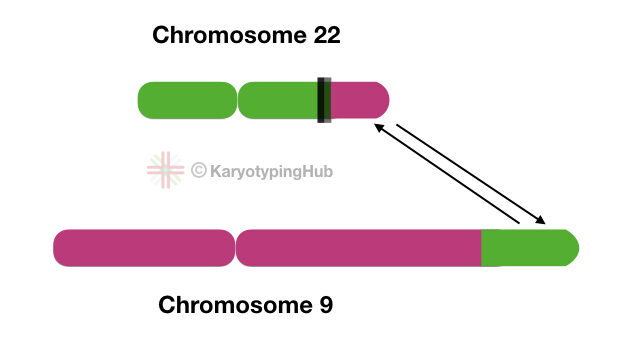
Pattister Killian syndrome:
Duplication means a portion of chromosome gets copied or duplicated. Which means a genetic material present on that portion doubles. Pallister Killian Syndrome is an example of chromosomal duplication.
In this condition, the portion of chromosome 12 is duplicated and results in severe mental and intellectual disabilities in the babies. In addition to this, developmental disabilities, poor muscle tones and other complex problems appear in the patient. The severity of the disease depends on in which amount the portion gets duplicated.
Myelodysplasia:
The classic example of chromosomal inversion is the myelodysplasia. It is a type of blood cell cancer in which the bone marrow does not mature.
Frequent infections, bleeding and shortening of breath are some common issues associated with it.
In the present condition some portion of the q arm of chromosome 3 get inverted and inserted back to the same chromosome.
Down syndrome:
One of the classic examples of the karyotyping abnormality is the down syndrome, a type of trisomy in which three copies of chromosome 21 are present.
Usually human chromosomes appear in pairs but due to the event known as nondisjunction sometimes an extra chromosome also appears with a pair. That exactly happens with down syndrome.
Mental, intellectual and developmental problems commonly appear in the patient. The condition is congenital and can be diagnosed using conventional karyotyping.
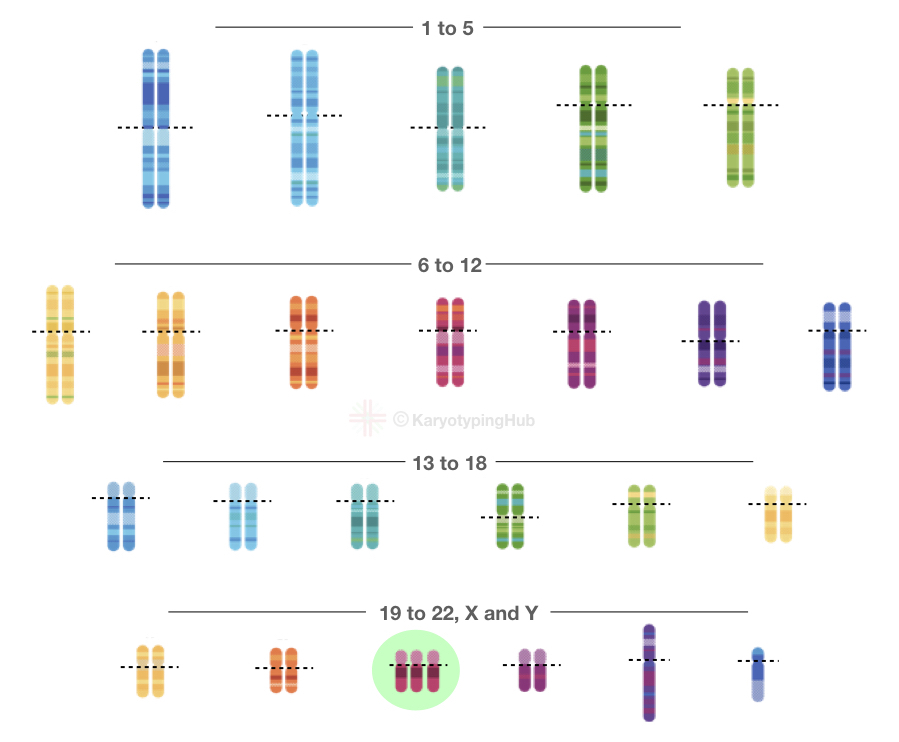
Patau syndrome:
Yet another type of trisomy is the trisomy 13 known as Patau syndrome. Again, the condition also occurs by the nondisjunction and is congenital.
Some of the common signs are decreasing muscle tones, small head, ear and mouth and shorthands.
Edward syndrome:
The Edward syndrome is also a trisomy of 18 in which three copies of chromosome 18 appear in a genome.
Abnormal and small head, heart problems, developmental problems and other physical abnormalities commonly appear in patients.
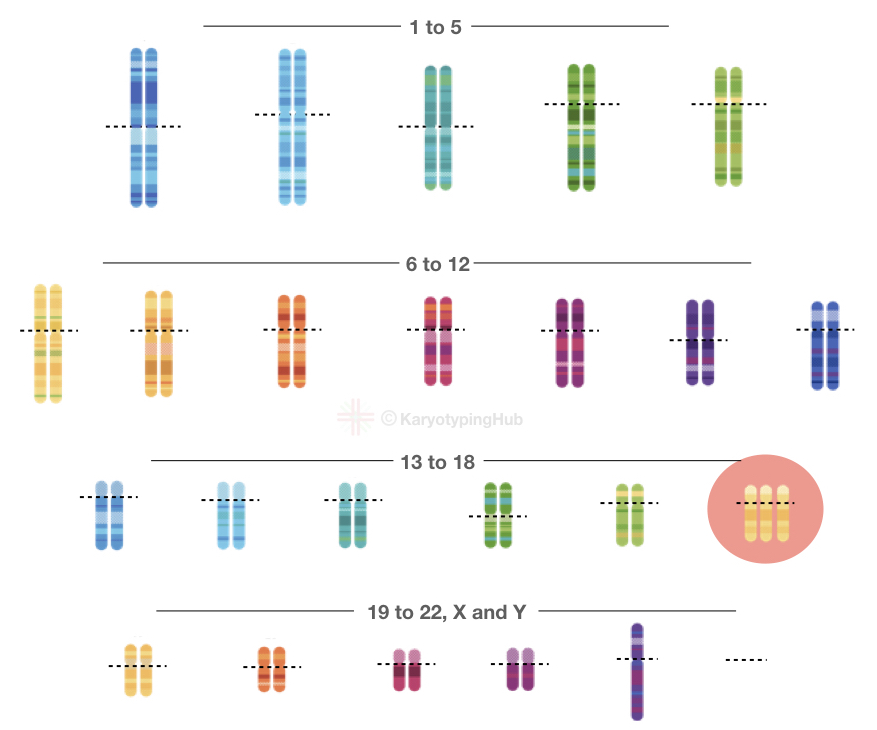
Klinefelter syndrome:
The klinefelter syndrome is a sex chromosomal abnormality occurs by change in the number of chromosome. The condition is observed in males only in which instead of a single X, another X chromosome is also present in a genome.
This simply means that not XY but XXY kind of karyotype is observed in the patient. The condition is associated with serious types of reproductive problems.
As two X chromosomes appear instead of single, the Expression of genetic material on X got doubled and that causes serious health problems.
The individuals with the Klinefelter syndrome look taller than normal. But infertility is the common problem associated with him. He can’t make babies.
As it is a numerical karyotyping abnormality, using only the conventional karyotyping and GTG banding method, the present condition can be detected.
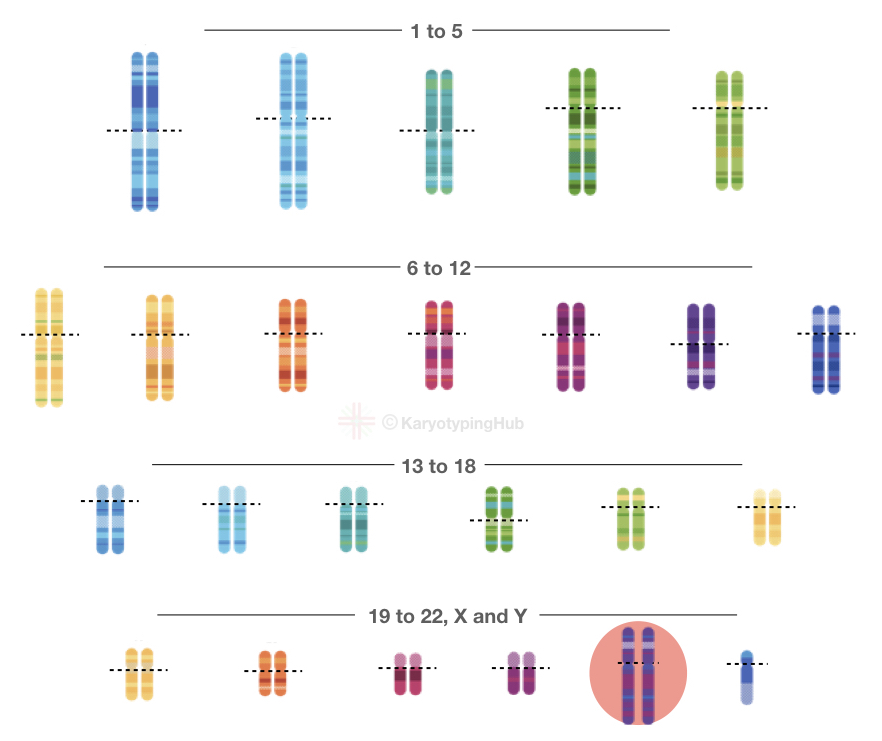
Read this interesting article: XXXXXY karyotype- A rarest case of Aneuploidy.
Turner syndrome:
Turner syndrome is also known as monosomy in which a genome lacks one chromosome. Thus instead of 46, only 45 chromosomes are present. The present condition is observed only in females in whom only an X chromosome is present instead of a pair.
Infertility is also commonly associated with this, with some developmental abnormalities like wide chest, short wide neck, small jawbones and low-seat ears are observed.
XYY syndrome:
The XXY syndrome is associated with males in which one extra Y chromosome appears in a genome. Thus total 47 chromosomes are observed.
Here also, the major symptoms are associated with infertility and reproductive systems. The genetic material of the Y chromosome got doubled which causes serious problems associated with genital development.
Some other chromosomal indication and abnormalities are given below,
| Sr no | Disease | Abnormality | Cytological indication |
| 11 | Ewing’s sarcoma | Translocation | t(11;22)(q23;q32.3) |
| 12 | Chronic myelogenous leukemia | Translocation | t(9;22)(q34.1;q11.21) |
| 13 | Acute monocytic leukemia | Translocation | t(9;11)(q22;q23.3) |
| 14 | Retinoblastoma | Deletion | del13(q14) |
| 14 | Chronic myelocytic leukemia B cell | Insertion | +12 |
| 16 | Seminoma and teratoma | Isochromosome | iso12p |
| 4a | Myelodysplasia | Inversion | inv(3)(q21;q27) |
| 4b | Myelodysplasia | Deletion | del(5)(q13;q31) |
| 17 | Non-Hodgkin’s lymphoma | Deletion | del(6)(q21;q25) |
| 18 | Melanoma | Deletion | del(1)(p21-22p36) |
| 19 | Neuroblastoma | Deletion | del(1)(p31.2-p36) |
| 20 | Sezary syndrome | Deletion | t(14;14)(q11.2;q32.3) |
Del- deletion, iso- isochromosome, t- translocation
Conclusion:
Karyotyping for chromosomal abnormalities is now very common not because it’s rate is increasing but because the testing facilities are now state of the art, robust and accurate.
We can’t imagine taking a fetus sample 50 year ago to do karyotyping. But now it is possible and people now want prenatal screening.
In order to reduce the burden of a genetic disorder and to make the future of babies safe and healthy, one should go for prenatal genetic screening.

